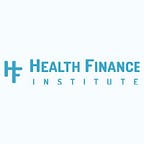The Intersection of Excess Sugar Consumption & Non-communicable Diseases
By Benjamin White, Health Economics
High sugar consumption increases the risk of a wide range of noncommunicable diseases (NCDs) including cardiovascular diseases, type II diabetes, and cancer. Global sugar consumption has continued to climb year over year, particularly in lower- and middle-income countries (LMICs), and this rise in sugar consumption has gone hand in hand with a rise in NCD prevalence in these countries. Despite this concerning increase in sugar consumption and the related detrimental health outcomes, there are a multitude of policy interventions available to decision makers that have been shown to be effective in reducing sugar intake to healthier levels.
Sugar and the Increased Risk of NCDs
NCDs are incredibly costly on the global scale in terms of both lives lost and the financial burden on the global economy. NCDs kill an estimated 41 million people globally each year and cost the global economy approximately 2 trillion dollars annually. Yet many NCDs can be prevented by reducing risk factors. One such risk factor for several NCDs is high sugar consumption.
Per capita sugar consumption has been shown to have a positive association with diabetes prevalence and cardiovascular diseases. Increased sugar intake is also associated with a higher risk for cancer incidence. Reducing excess sugar intake could help reduce the burden of these NCDs, offering health and economic benefits around the globe.
Globally Increasing Sugar Intake
In 2015, the World Health Organization released new guidelines for sugar intake which called for a reduction of sugar consumption to no more than 10% of caloric intake per day.
While it may be tempting to celebrate the fact that global sugar consumption recently declined for the first time in decades, when we dive into the details the data paints a much less rosy picture. This global consumption decline was largely driven by both the pandemic and a longer trend of decreases in sugar consumption in high-income countries like the United States. In fact, even through this brief period of declining global consumption, per capita, sugar consumption in low and middle-income countries has continued to rise and is predicted to keep increasing over the coming decade. This forecast should be particularly alarming to global health experts due to the association between high sugar intake and increased incidence of NCDs.
Policy Interventions to Reduce Sugar Consumption
Governments are not without options for policy interventions to reduce sugar intake, and policymakers should learn from the successes we have seen throughout the international community in attempts to reduce high sugar consumption.
Sugar-sweetened beverages such as soft drinks, fruit drinks, sports drinks, and energy drinks are critical contributors to the increase in sugar consumption. Studies have found sugar-sweetened beverages to be the primary source of added sugar intake in numerous countries around the globe. As such, many of the successful policy interventions to reduce sugar intake focus on these sugar-sweetened beverages.
Taxation of High Sugar Foods and Beverages
Taxation of foods and beverages with high levels of added sugars has been proven to be an effective policy intervention to reduce sugar consumption, while also providing revenue for the community and health-focused programs. Furthermore, sugar taxation has shown to be associated with decreases in obesity, and these weight reductions were constant regardless of socio-economic status.
One of the main arguments against sugar taxes is the economic harm caused to producers. However, thoughtful tax policy has shown to reduce sugar consumption without damaging producers’ revenue. In 2018, the United Kingdom (UK) implemented a tiered taxation system in which producers paid higher taxes for sugar-sweetened beverages with higher levels of sugar. This system incentivized both the production and purchase of drinks with lower levels of sugar and resulted in a 10% reduction in household sugar intake from sugary beverages without harming the industry.
Regulating Advertisement of Foods High in Sugars
The UK and Australia have both implemented bans on advertising unhealthy foods and beverages which resulted in a reduction in sales of sugar without resulting in a loss of gross profits for retailers. This effectively means that when advertising for unhealthy foods was removed, consumers still spent the same amount of money, but were more likely to spend it on healthier foods.
Setting Size Limits on Sugar-Sweetened Beverages
In 2012, New York City adopted a regulation that established a maximum size allotment for sugary drink sales sold in food service establishments. Under this regulation, drink sizes could not exceed 16 ounces, however, consumers could buy more than one drink and refills were still permitted. Though the regulation never actually went into effect due to legal challenges, the city-wide effort may still contribute to an increase in public awareness of the risks associated with sugary drink intake. Evidence shows that despite the regulation never being enacted, a year-over-year decrease in sugary drink consumption followed the initial announcement of the regulation.
Next Steps
Governments that continue to ignore the detrimental effect of overconsumption of sugar will likely pay the cost of this decision in the form of higher NCD prevalence and increased health expenditures on preventable conditions. Decision makers have a toolbox of evidence-based policy interventions available that have been shown to help curb excessive sugar consumption without harming the industry. Policymakers should not delay action to restrain the growing rate of preventable NCDs associated with excess sugar consumption.
